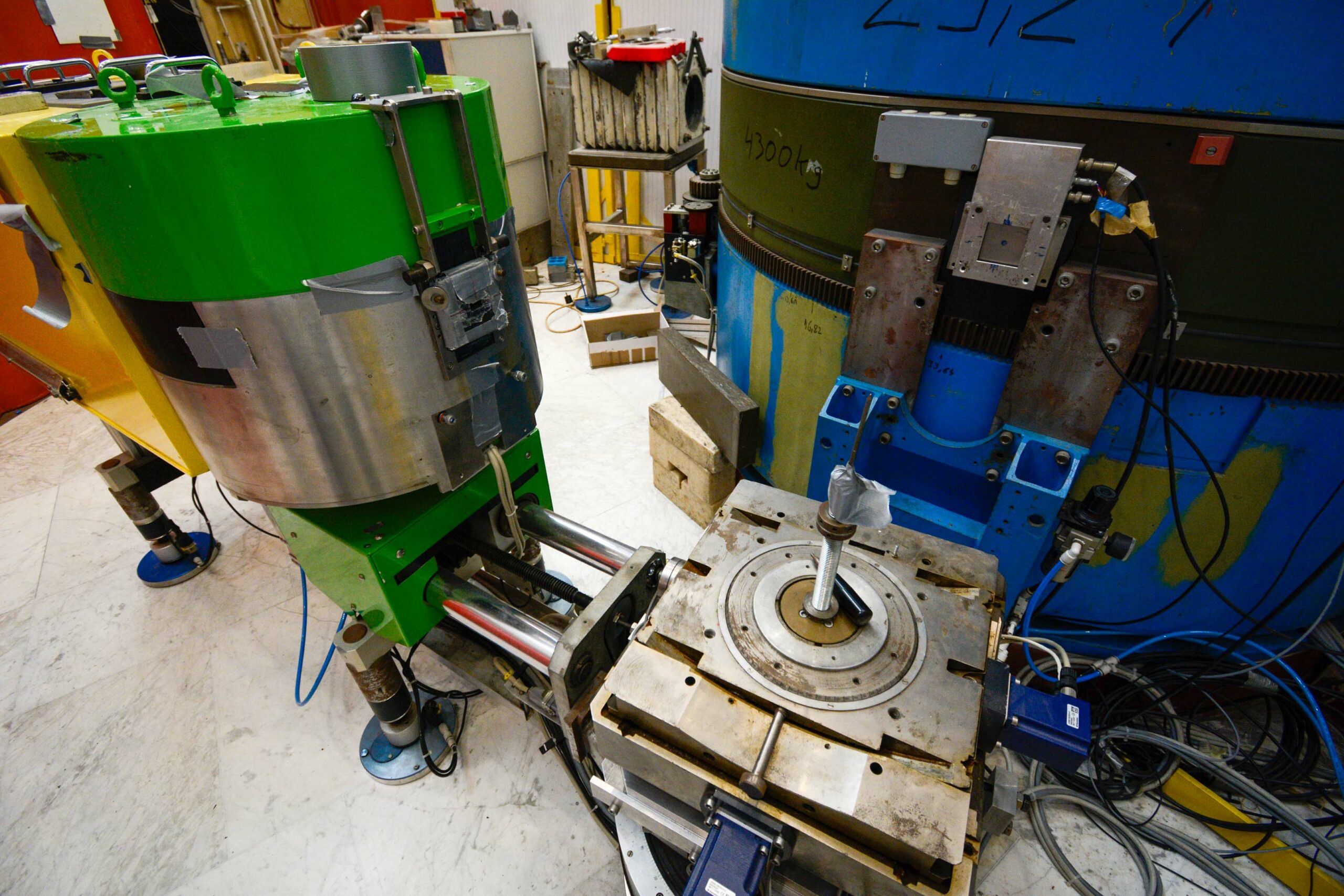- Name: TAST/HOLO – Thermal Neutron Three-Axis Spectrometer and Neutron Holographic Instrument
- Technique: three axis spectroometer / hologram measuring station
- Energy range (TAS): 1-60 meV
- Interatomic distance (holography): maximum 10 Å
- Typical size of sample: 1cm
- Contact: tast@bnc.hu

The thermal neutron three-axis spectrometer (TAST) of BNC is installed on the thermal neutron channel No.8 at the Budapest Research Reactor. The instrument provides (~1.0 meV) moderate resolution with sufficient intensity for use in a wide range of problems. It is ideally suited for the study of phonon and magnon dispersion in single crystals, phonon density of states for a wide range of materials, which contain hydrogen. Independent control of the momentum (Q) and of the energy transfer (E) is a routine, if required, as opposed to Time-Of-Flight spectrometers in which Q and E are related by the instrumental configuration. The TAST/HOLO triple axis spectrometer can also be used in a multi-purpose regime, e.g. for high-resolution diffractometry, inelastic scattering as well as for thermal beam irradiation and transmission tests as well as tests of neutron optical components of various kinds.
Neutron holography is an element-sensitive structural investigation method which gives the atomic positions around H or neutron absorbing atoms in a single crystal. Holograpy uses a known (reference) beam and a beam coming from the target (target beam) that is coherent with the reference beam. The interference of the two beams contains the information position and shape of the target. Neutron holography uses two basic method:
Internal source used H atom as an incoherent scatterer. The reference beam is the incorerently scattered neutrons and the target beam is the neutrons from the reference beam scattered by the neighbouring atoms. The detected signal is the intensity of the incoherent background far from the Bragg peaks. Internal detector holography uses a detector atom which gives a „detector signal” can be separated from the scattered incident beam. The intensity of the detector signa gives the neutron intensity at the position of the detector atom which is modulated by the interference of the incident beam (reference beam) and the neutrons scattered by the neighbouring atoms of the detector atom. Neutron absorber isotopes can be used as detector atoms, the detector signal is the prompt gamma yield coming from the neutron absorption.
The monochromatic beam is provided by a horizontally and vertically focusing Cu[002] monochromator of 90mm height and 150mm width. In order to suppress the intensity of fast neutrons, a 15 cm long sapphire single crystal is inserted in the primary shutter. A Ge analyzer can be optionally used for higher order filtering in the incident monochromatic beam. The beam divergence is determined by thin film Soller-type Mylar collimators coated with Gd2O3 .
A highly efficient (90% at 1 Å) 3He single counter of 3” diameter is applied as detector. A two-dimensional position-sensitive detector is also available to use in medium resolution mode. For energy analysis a horizontally focusing pyrolytic graphite crystal assembly is used.
The spectrometer can be equipped by an Eulerian Cradle, or a tilt table that can hold various sample environments up to a mass of 100 kg.
For measurement of internal detector holographz a BGO gamma detector is available with a proper shielding to filter the rather high gamma background of the environment and detect the low intensity holographic signal.
| TAST characteristics (default configuration) | Details | |
| Beam | Channel No. 8. (radial channel with sapphire filter) | The beam tube a sapphire filter suppress the intensity of high energy neutrons |
| Detector | 3He | pressure is 10 bar |
| Gamma detector | BGO scintillator | |
| Monochromation | Cu[002], horizontally and vertically focusing | |
| Wavelength range | 0.8 – 1.6 Å | |
| Primary collimation length | 1.5 m | |
| Analyzer | PG[002], horizontally focusing | Mosaicity is 0.4o |
| Analyser angle | -100o – 100o | |
| Scattering vector range | 1.5 – 10 Å-1 | Relative resolution 0.8% for Fe(110) at 2θ = 90o |
| Energy transfer range | 1 – 10 meV | |
| Sample position system | Rotation + 2D movement | Rotation around vertical axis with 0.02o resolution, X-Y or X-Z movement with 0.1 mm resolution |
| Optional analyser | Pyrolithic graphite /Ge(111)_ | tGe(111) can be used as higher order filter |